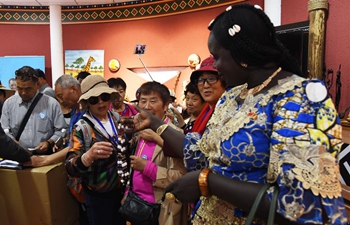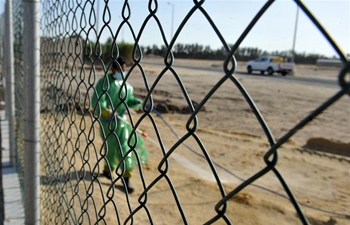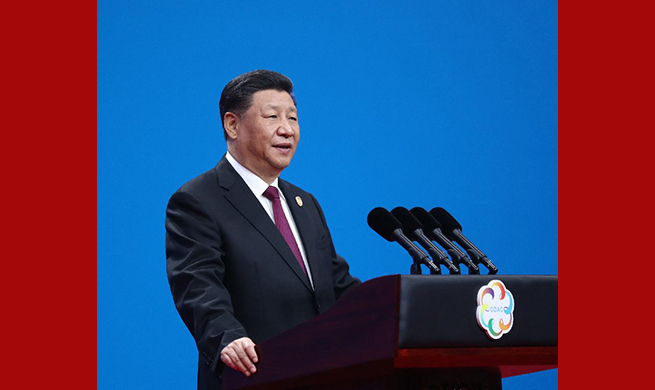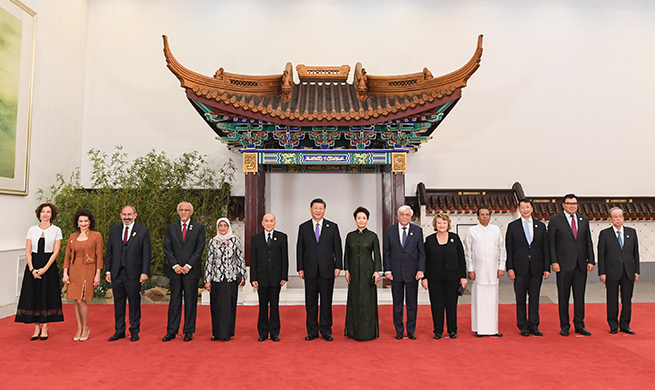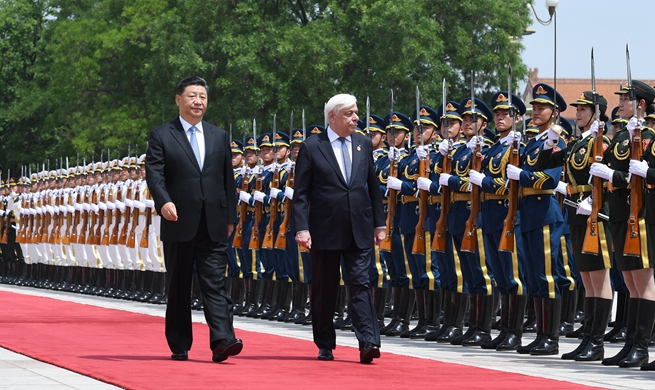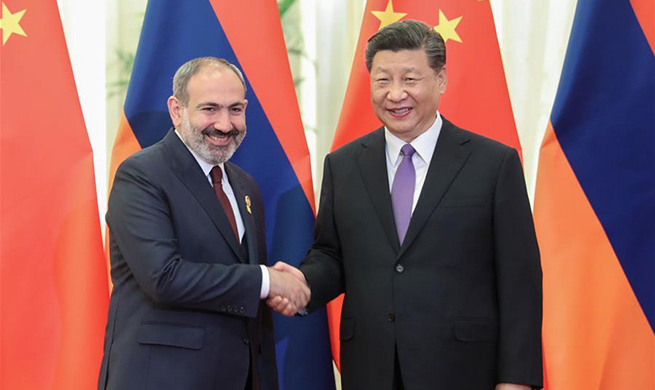ROME, May 15 (Xinhua) -- Technological innovation can be crucial to boost policies on poverty reduction and extreme hunger eradication, officials from the United Nations (UN), China, and various other stakeholders stressed at a seminar here on Wednesday.
Held at the International Cooperation Expo (EXCO) ongoing at Fiera di Roma Exhibition Center, the event was organized by the three Rome-based UN agencies -- World Food Programme (WFP), International Fund for Agriculture Development (IFAD), and Food and Agriculture Organization (FAO) -- and China's International Poverty Reduction Center and Internet Information Center (CIIC).
This was the third seminar on Global Partnership for Knowledge Sharing on Sustainable Development Goals (SDGS), accelerating poverty reduction and eradicating hunger. And involved representatives from national governments, development banks, NGOs, and private actors.
"The seminar could not be timelier," WFP Deputy Executive Director Amir Abdulla said in his opening address, recalling that some 113 million people across 53 countries suffered acute hunger and required urgent nutrition and livelihoods assistance in 2018, according to the latest Global Report on Food Crises.
"This figure is down slightly from 124 millions reported the previous year; however, the number of people in the world facing food crises has remained over 100 million in the last three years, and the number of countries affected has risen," Abdulla explained.
Addressing more specifically the focus of the seminar -- the role and possible contribution of technological innovation -- the official further explained the WFP was already using "biometrics, block-chain, digital cash, drones and satellite imagery among other tools to reduce poverty, and promote food security and sustainable development in rural areas".
Abdulla urged public and private actors to boost efforts and invest in infrastructure and human capital, so that "developing countries can use technology to connect farmers to markets, produce data and analytics for decision making, and tackle climate change".
Xia Gengsheng, deputy director of the State Council Leading Group Office of Poverty Alleviation and Development, recalled Beijing was able to lift more than 82 million rural people our of poverty and reduce rural poor people to 16.6 million in 2018 from some 99 million in 2012.
As the Chinese government was now working according to a post-2020 strategy, Xia explained key strategy policies were clearly outlined and implemented.
"Gradually, six sub-systems have been established, covering accountability, policy implementation, fund management, mobilization, supervision and assessment for poverty alleviation," he said.
"Through the adoption of this all-round system, poverty alleviation policies have targeted those who truly need help, delivering genuine outcomes," he added.
During the seminar, the result of the Global Solicitation and Challenge Prize on Best Poverty Reduction Practices was presented, with the list of the first compilation of 24 poverty reduction case studies released, out of the 110 best case studies on a shortlist.
Among the case studies on technological innovation and poverty alleviation projects provided at the seminar, one concerned China's northern Shanxi province, and was implemented by the Asian Development Bank (ADB).
"Shanxi Province only has about 3.8 million hectares dependable arable land, of modest quality and productivity, for its 23 million rural population," ADB's External Relations Officer Melanie Ullrich explained.
"Sustainable production was difficult because of low rainfall, high evaporation, frequent natural disasters and soil erosion, while the farmers' technical capacity was seen as weak and their access to markets and finances was not good."
To address this condition, the ADB in 2009 provided a loan of 100 million U.S. dollars through the Chinese finance ministry to implement a sustainable agriculture model and reduce rural poverty in Shanxi.
Once completed in 2016, according to Ullrich, the project involved some 40,000 farmer-households across 26 counties of Shanxi. Delivered results comprised a 7.5 percent drop in rural poverty rate, which benefitted more than 570,000 people.
Furthermore, "the project county rural net income per capita grew within a range of 77.6 per cent to 192.1 percent, and the gross domestic product per capita grew within a range of 10.4 per cent to 131.5 per cent," she said.
"China's successful experience in reducing poverty has also generated a bulk of knowledge to share with the rest of the developing world. It could be the immediate, tangible contribution that China can make to the global commitment to end poverty and achieve sustainable development by 2030. "
"The Global Solicitation and Challenge Prize on Best Poverty Reduction Practices is very fruitful and allows more countries to learn from China's experience," Ullrich said.
In the closing session of the event, Tang Shengyao, director of FAO's Office of South-South and Triangular Cooperation, urged all parties to boost knowledge sharing both about new technologies applied to global poverty fight and about concrete best practices.
"This seminar has highlighted the importance of disseminating successful experiences on the use of technological innovations for rural development," he said.



